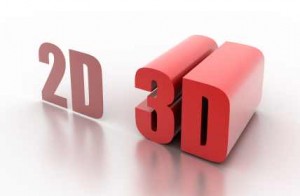The arrival of 3D has definitely thrilled the market and lifted consumers’ expectations. 3D broadcast channels, TVs with built in ‘on the fly’ conversion ability and 3D cinemas pop up like mushrooms. Not a long time ago just four 3D movies generated 33% of total revenue of the box office.
At first glance, it may seem that auto conversion can save a lot of money and manual work, but it has to be remembered that the quality of auto-conversion is strongly linked with the source material. It is far easier to convert a movie that was made with 3D in mind than some old movies which used to be fully devoted to 2D. Auto – convertors do not like abrupt cuts and vertical motion since the convertors’ depth detectors prefer horizontal plane. However the idea of turning old movies into 3D reminds many of the colorisation era in the 80’s and leaves them similarly disappointed. And as the latest damaging reviews for The Clash of the Titans showed, the idea of turning into 3D the movie with no previous intention for extra dimension brings literally nothing to the watching experience. We may also wonder if it will ever be possible to create a computer algorythm that can achieve the 3D perception equal to that of human brain, but so far the real quality conversion can only be done by skilled engineers.
The basic way to convert 2D to 3D is by ‘vertical location’. The image is cut into horizontal zones and the zones at the bottom of the screen seem to be closer than the others. Yet, many aren’t satisfied with the results. The more advanced method is to simply clone the movie. By doing so, you get two identical picture sequences. One – for the left eye – remain untouched and the other is transformed in the search for a deeper dimension. Individual objects are isolated with a use of two techniques: rotoscoping and matting. The former traces the contour of an object in every single frame of the movie and the latter constructs a mask (using color, motion or brightness) that follows it around. Finally, the relative depths are measured using parallax.
There is also a physical phenomenon called the Pulfrich effect, where a visual lag between the left and right eye creates depth from 2D. A variation on this theme, combined with objects moving at different speeds in successive fields can bring interesting results as well.
Anyway, only the luckiest half of humanity will be able to fully appreciate the result of quality conversion. Let’s hope you are among them!
